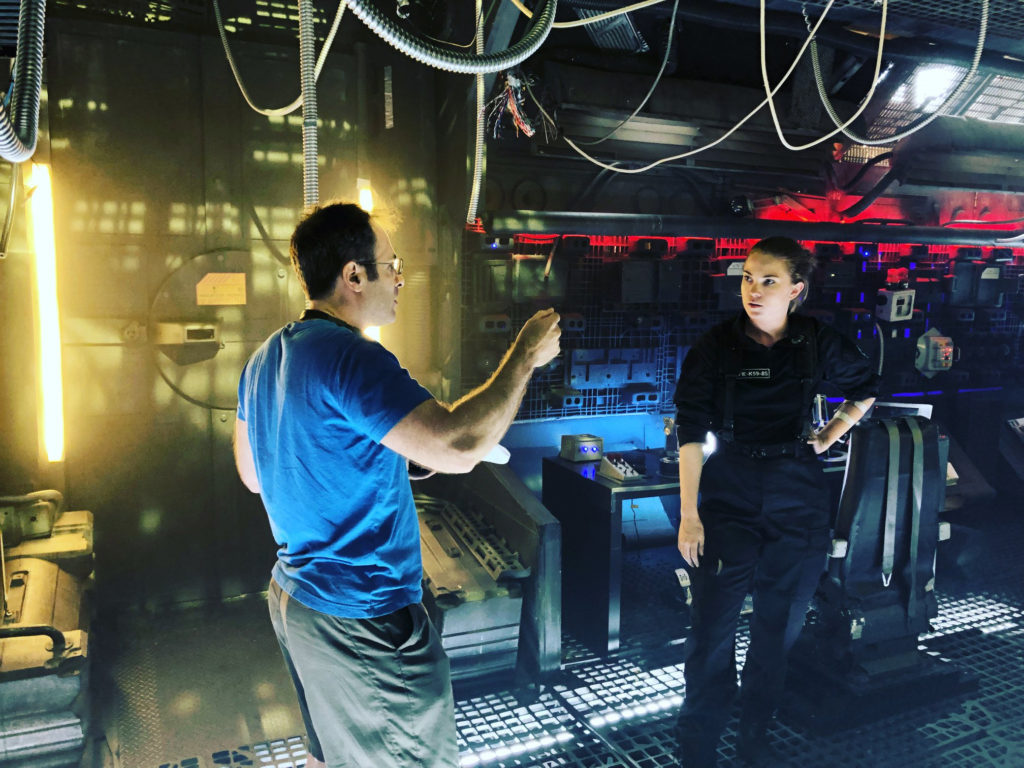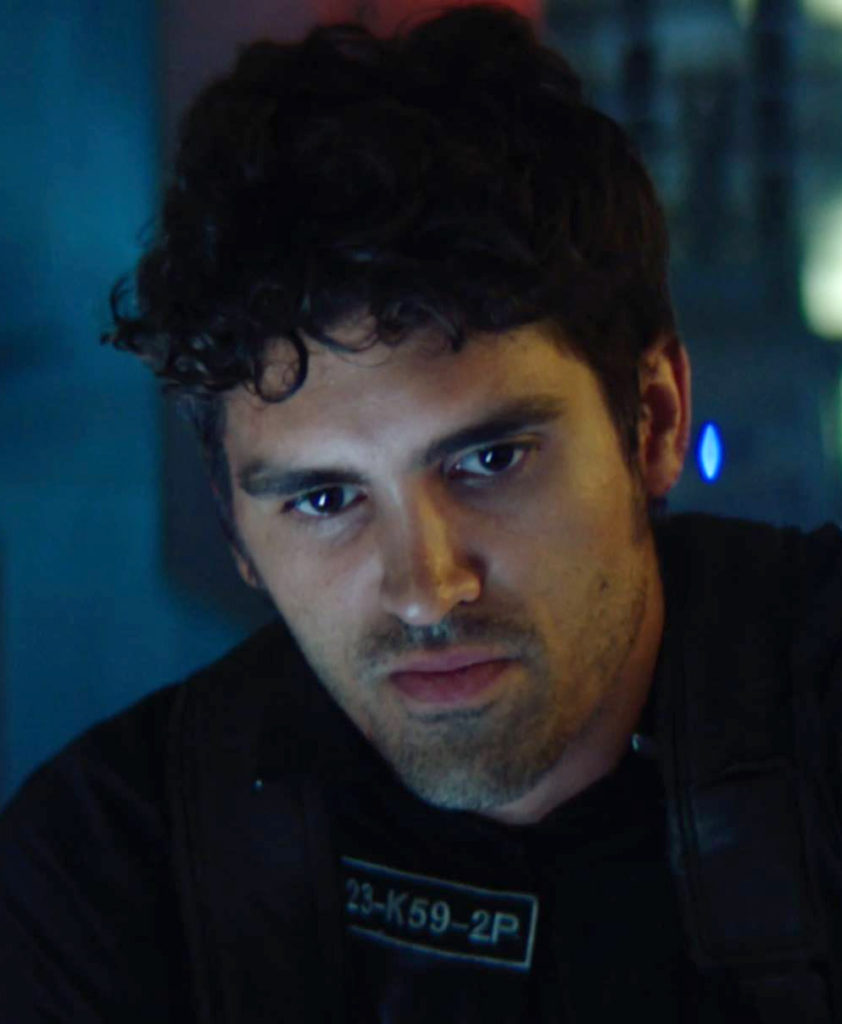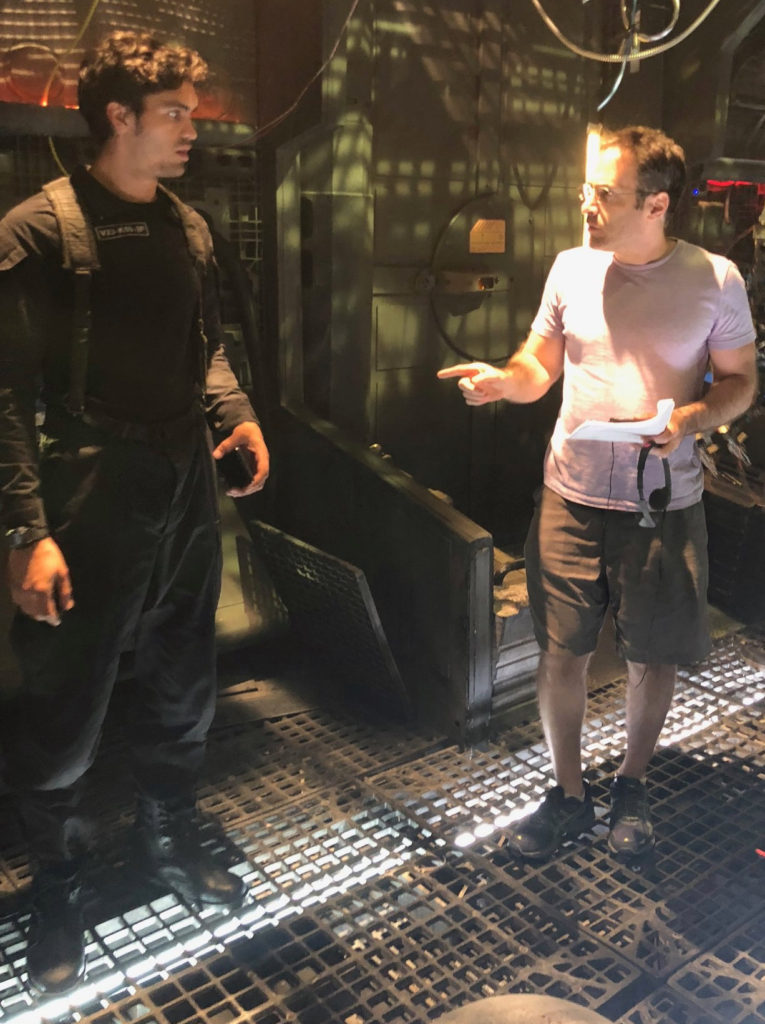A little over a year ago, a Star Trek fan named LUKAS KENDALL set out to do something that some folks out there have suggested: crowd-fund something NEW that isn’t Star Trek so there’s no questions of rights or ownership. Of course, the big question was (at the time) whether people would donate to a fan-funded project that wasn’t part of an existing franchise like Star Trek or Star Wars or superhero, etc.
The crowd-funding campaign was atypical in a couple of ways. In addition to taking a very tongue-in-cheek approach in the pitch to donors and offering music CDs as perks (Lukas sells ’em as a business), Lukas included the full 12-page script for the short film for potential backers to read and evaluate.
The unusual approach worked, and Lukas was able to blast past his $25K goal on Indiegogo and reach $31K to produce what was intended to be a short segment of a longer, full-length movie that Lukas wanted to direct himself. The short segment was called SKY FIGHTER and was a self-contained story. But it also fit into the larger full-length feature, and the plan was (is) to use the 16-minute Sky Fighter to try to sell the larger project to production studios.
Coming on board to work on the project were two names VERY familiar to the Trek fan film community: ROBERT MEYER BURNETT to edit and TOBIAS RICHTER and the Light Works to do the visual effects.
Last week, the completed Sky Fighter premiered exclusively to backers, and it is masterful…a top quality production in every way. Rob outdid himself on the editing and Tobias, well, when has he ever failed to impress? And Lukas himself did an extremely strong job directing.
In order to keep Sky Fighter eligible to be entered into film festivals, the completed production cannot be posted publicly to the Internet yet. However, if you want to see it now, a new Indiegogo campaign has been set up to cover cost overruns and the production of Blu-ray discs and CDs (the music is incredible!). For as little as $5, you can get an exclusive link to the finished film. Click below to donate…
https://www.indiegogo.com/projects/sky-fighter-sci-fi-short-film-blu-ray-release
The goal is $5,000, and Lukas is already 21% of the way there. In the meantime, the trailer is publicly available right now…
Lukas was eager to talk about his first foray into directing and share a behind-the-scenes look into this amazing production. Let’s get after it…
JONATHAN – Welcome back to Fan Film Factor, Lukas, and congratulations on getting your film completed.
LUKAS – Thanks for having me back!
JONATHAN – So overall, how was your first foray into directing? Was it everything you hoped it would be? Better? Worse?
LUKAS – It was the greatest creative experience of my life—and incredibly stressful, because of the business side of self-financing (including producing the Indiegogo campaign). So, a year later, it’s validating to have people start to see the film and enjoy it.
JONATHAN – Okay, so let’s start at the beginning. What did you do in pre-production to prepare for this shoot?
LUKAS -I was lucky in that I met the cinematographer, Daniel Marks, at my college reunion in 2016. He is rising up the ranks as a really gifted cinematographer. Last year he was running a production company with a friend, Levi Smock (they share a “Produced by” credit), and they liked the project and agreed to produce it.
They guided me through pre-production—hiring department heads, budgeting, scheduling, booking a stage, dealing with the actors’ guild, getting insurance, and so forth. I know loosely about those things, but would not be competent at them, at all.
For casting, I worked on a parallel track with the third credited Producer, Christine Sheaks. I have worked with her before and she and I kind of have a Vulcan mind-meld for casting.
JONATHAN – Let’s dive a little deeper into casting. By my count, you have five actors in your production, and each did a spectacular job, by the way. How did you find each of them? Did you know them before, or did you hold auditions…or both? What were you looking for in the actors you hired for each part?
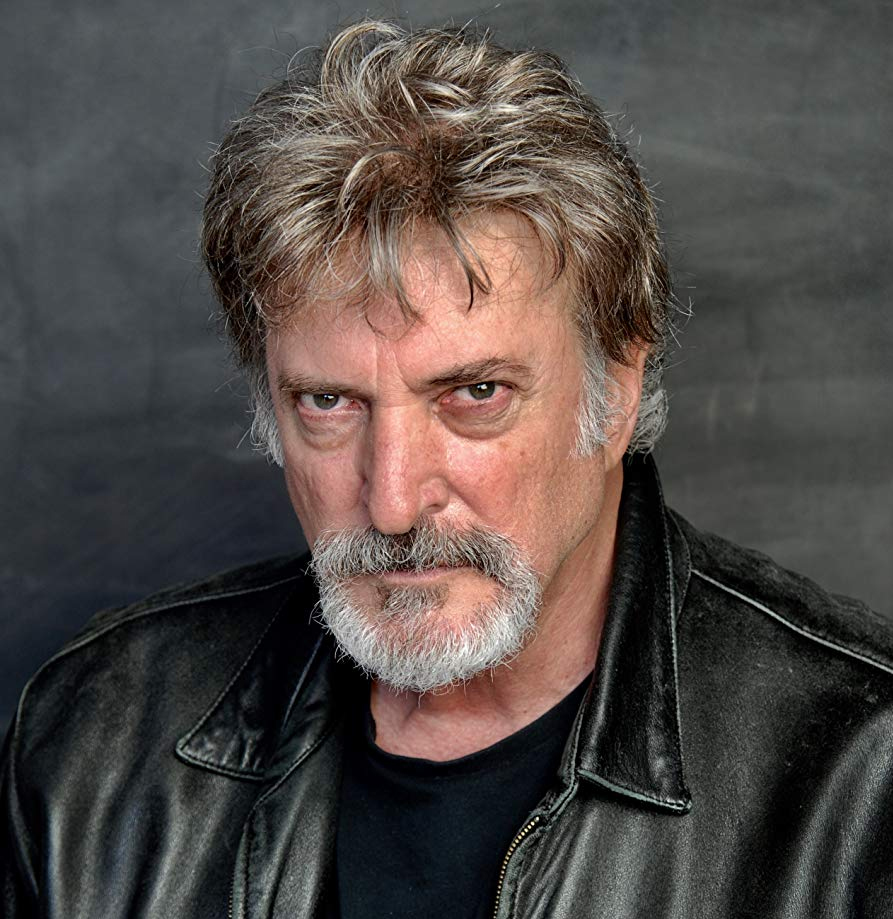
LUKAS – I didn’t know any of them. Well, that’s not true—I met Richard Epcar once, but he would never remember. I am a huge Robotech and Ghost in the Shell fan and love his voice. So I knew I wanted him for the pilot over the radio, and we made an offer through his agent and he said yes and recorded his lines at home and sent them to us.
There are sort of two ways you can go about casting a low-budget production. One is you cast (excuse the pun) a very wide net and do a lot of auditions and call in favors from friends. You end up with people with less experience who may not be right for the part, but you don’t have to pay them much, and you can do a lot of rehearsals.
And then there’s what we did: make offers to people who are already working in movies and television shows. (That’s where having a producer like Christine is essential, because she cast Boogie Nights—she’s a known quantity to agents.) The risk is that you’re taking a leap of faith, hoping they’re right for the part without seeing them audition; better actors cost more (market economics); and, due to schedules and availability, you might not be able to book them until the last minute. Which is what happened: I met Tom Maden the day before the shoot, and I met Jess Gabor the morning of—literally, she walked in, “Hey, I’m Jess!” and we sent her to wardrobe and brought her to set and it’s like, “Okay, let’s roll.”
So that was a terrifying final week of prep, being committed to spending money and building a set without actors being cast. The first few hours of the shoot were pretty stressful as well. Here I am, the first-time director—who’s also the financier—and the clock’s ticking, and you’re trying to work out technical problems of smoke machines and lights dimming, and it’s like, wait a minute, if we don’t get these characterizations right, it’s all a waste of money.
So it was a trial by fire, but we just dove into it, line by line…and the upside kicked in of choosing “high-end” casting. First, they look great. When you’re doing sci-fi with spaceships, aliens, cybernetics, holograms and memory implants, you need actors with strong screen presences, or they get swallowed up by the hardware.
Another is that you get the benefit of their experience: their ability to handle lines, blocking and emotions, and take direction, and accommodate the mechanics of filmmaking, very quickly and accurately. You go from takes 1 and 2 being all over the place, to takes 3 and 4 being passable, and then you get to takes 5 and 6 and it’s like, “Holy cow—it’s a movie.”
The upside is enormous and I think you see that on screen.
I wanted Tom Maden because he could embody two things at once: the masculine warrior, and the vulnerable boy within. If that part was cast too old or too tough, it wouldn’t be sympathetic when he was caught up in the memory of his father—it would be kind of creepy. But Tom is very masculine and commanding, and also very sweet and genuine. There’s a goodness to him, so you feel for him when he wants to do the right thing—he just can’t figure out what.
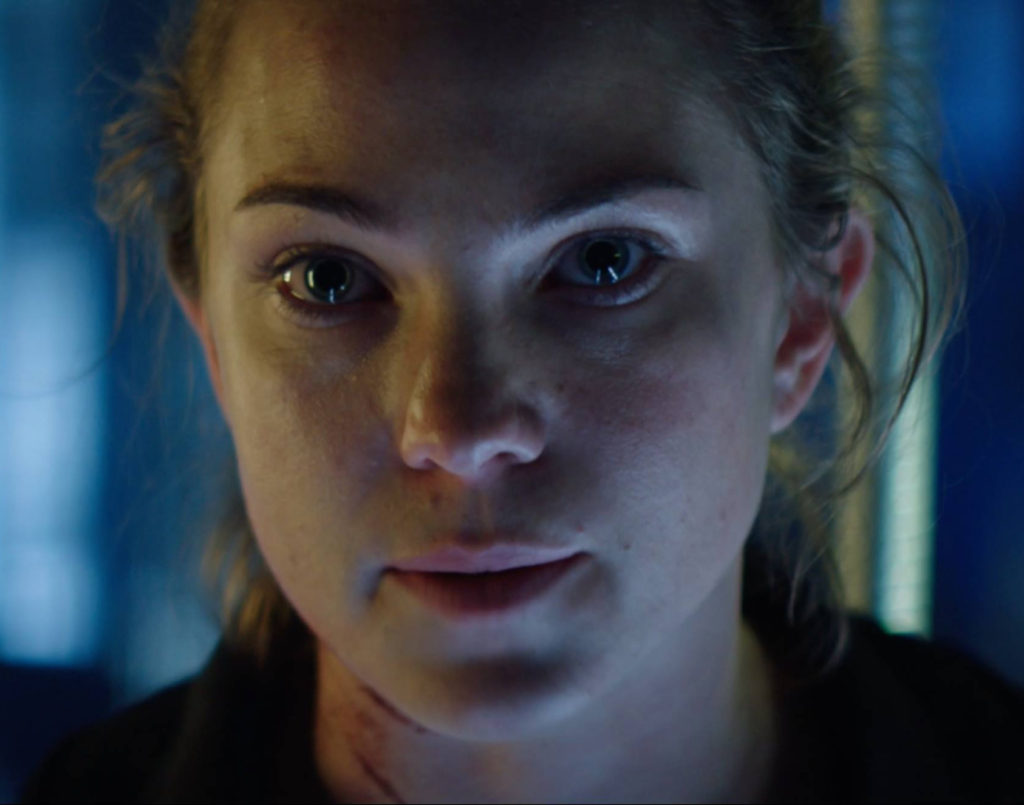
Jess Gabor is a fantastic talent with an innate ability to “hold the screen.” She’s totally believable as a very controlling character—which is funny because her actual personality is very easygoing and upbeat. But you call “Action!” and she snaps into this very intense, cinematic presence. You just get sucked into her eyes and feel her “inner life.” She’s really got something.
For the flashback/memory sequences, Christine suggested Erik Palladino, who has the perfect quality of warm, paternal authority. You’ve seen him in tons of movies and TV shows, most recently in The Marvelous Mrs. Maisel. I was so grateful he agreed to do the project, because oftentimes established actors aren’t going to do short films for first-time directors—there’s too much downside for not a lot of money. But he liked the script and thought, “Yeah, this looks cool”—he told me as much, which was a really meaningful endorsement.
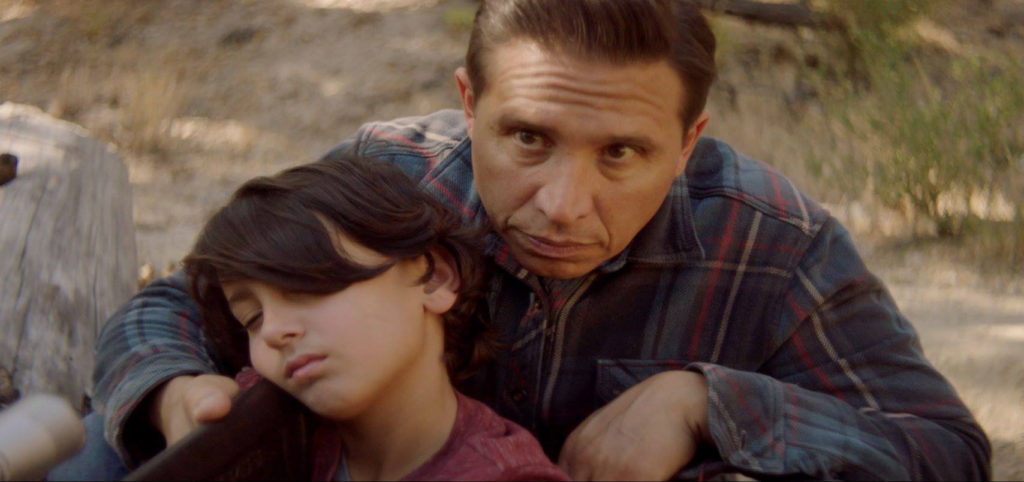
For the younger version of Tom’s character, we found a child actor with an uncanny resemblance to Tom, Declan Churchill Carter. I don’t know much about directing child actors, but Declan is a very agreeable young man with a delightful family. Erik and Declan did a marvelous job in performing these little vignettes that we cut into the flashback montages. That’s great casting, to me, and why I work with Christine—you choose actors who embody the characters, so you can somewhat under-direct them and just capture the magic.
And then there’s Richard Epcar, with the great military, masculine voice.
Christine taught me that the trick to casting is that it’s not just each part by itself—it’s how they work together, the tapestry that they form. She and I together, I think, have very good judgment on casting, so we can bypass auditions and be well-served by our imaginations.
So I am very proud of the cast and the performances!
JONATHAN – Now, let’s talk about locations, of which you had two: the spaceship interior and the outdoor “nature” scenes. How did you find each location, and what was necessary to prepare for both?
LUKAS – The spaceship is a standing set at Laurel Canyon Stages in the San Fernando Valley. You’ve seen it in dozens of lower-budget space projects where, like us, they couldn’t afford to build a set from scratch—most recently in a couple of Alien short films.
When we were shooting, one of the employees at the stage said, “Wow…that’s the best the set has ever looked.” That was very good to hear!
Our production designer, Benjamin Ralston—who was also the Axanar production designer—dressed the set with a combination of materials they had at the stage and rentals from local facilities. Some of it I don’t even know where he got it. The seats were from old airplanes, I think. He’s a wizard. The alien probe was some kind of robot contraption dipped in black latex. For the cybernetic “neck plug” he used a magnet—so simple. His ability to be practical, inexpensive, and visually correct and interesting, and also convey the story, is top-notch.
The other part of the spaceship was the lighting, which is Daniel Marks’ domain. He and I looked at some movies that I thought would be good models—particularly Alien and The Empire Strikes Back. He had the idea to do almost all self-illumination—to use practical lights under the floors and through the walls. It looks dazzling and has the added benefit of not needing a lot of adjustment from shot to shot, so you can move faster. He recommended shooting anamorphic, which I was not sure was a good idea, but he was 100% right. He called in a favor to borrow very expensive anamorphic lenses, which I appreciate.
I remember halfway through the shoot, I was looking at the monitor, and I thought to myself, “What does this remind me of?” And then I realized—The Empire Strikes Back. He actually made it look like The Empire Strikes Back on a fraction of the budget.
The outdoor location was up in Angeles National Forest, at three different spots that Dan and Levi found. Those vistas offer great production value.
JONATHAN – What about costumes? Were those specially designed for your production, or did you just “buy off the rack”?
LUKAS – The costumes were “off the rack” for budgetary reasons. The costume designer, Megan Lian, sent me PDFs of different choices. We kept it simple and utilitarian—no bulky spacesuits or superhero costumes. I think it was a pretty basic, black tactical uniform as the base. She had great taste in mixing and matching. Not being cast until the last minute made it hard because she didn’t know what sizes to get, but she was able to make it work (and also age and distress the costumes). Tom Maden suggested a subtle addition that really helped: the harness. It gives the costumes an extra depth and realism. Scott Saslow, one of our donors, designed the sleeve patches. He also did the signage inside the ship, which was really generous of him.
JONATHAN – Let’s move on to the production phase. What was it like shooting this film? How many days were required to get the 14 and a half minutes of footage that went into the finished film? What were some of the biggest challenges you ran into?
Next week, we finish up this fascinating, close-up look at what it’s like to be a first-time director on a tight budget trying to make your dream come true. We cover production (shooting the actual film), post-production (working with Tobias Richter and Robert Meyer Burnett), and how long it’ll be until Lukas can post this to the Internet for everyone to see.
But remember, if you don’t want to wait, just $5 donated to the link below gets you immediate access to a backer-only link—and donating a little more gets you other cool stuff. Check it out…
https://www.indiegogo.com/projects/sky-fighter-sci-fi-short-film-blu-ray-release


